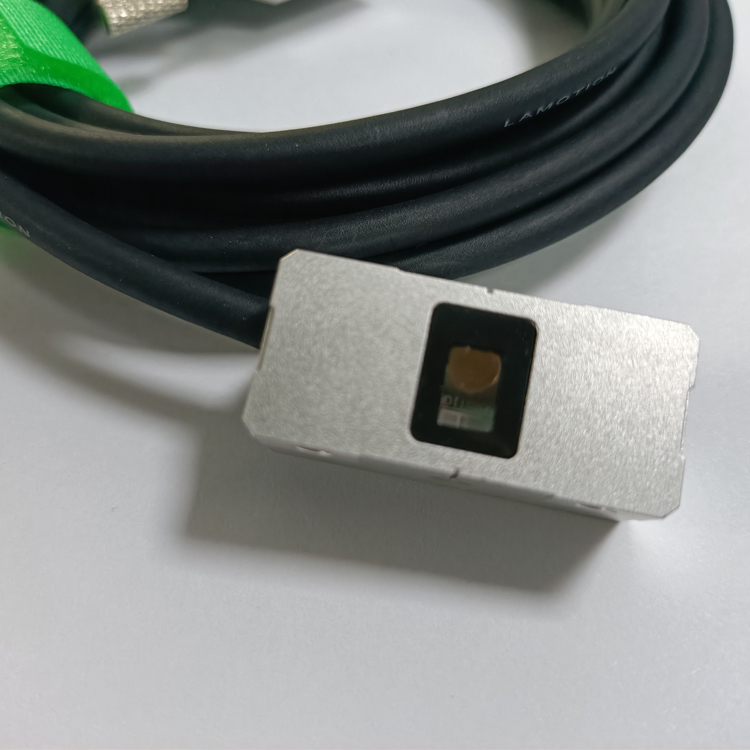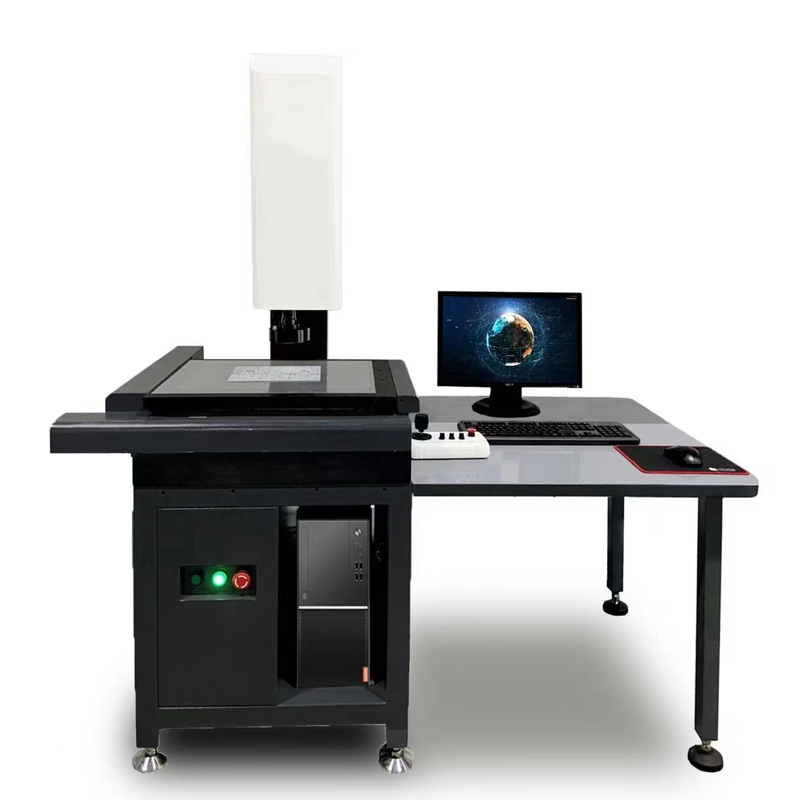The right positioning table and digital drive combination enables precision adjustments with fast response and settling times.
As automated equipment in industrial, medical and life science markets becomes increasingly faster and more accurate, engineers must adapt with higher performing linear motion and positioning systems. At the same time, however, the envelope for motion control is shrinking, making it difficult to design a fast, precise system that can fit into tight spaces. Despite the challenge, it is possible to design a linear motion system that delivers the high performance these machines demand. For example, a linear positioning table and digital controller combination optimized for high-speed communications and fast response achieves an ideal balance of precise positioning and exceptional control. This article will describe some of the essentials machine designers should consider when implementing a precision linear motion system for high-speed automated machines, along with an out-of-the-box setup that provides exceptional results. linear encoder

Designed to provide controlled motion within small spaces, linear motor positioning tables are well-suited for dynamic applications as diverse as semiconductor manufacturing and inspection, pick-and-place assembly, micro-machining, military COTS, photonics and laboratory equipment. Figure 1: Cutaway of an IKO NT Series linear motor table with moving magnet and optical linear encoder. Although a ball screw combined with a servo or stepper motor is an appropriate driving method for some applications, linear motors typically offer the most precision, speed and reliability for automated equipment. A high-performance neodymium magnet generates a large thrust force. This makes large accelerations and decelerations possible and allows high-speed and highly responsive positioning. Without mechanical power transmission components between the motor and the load, linear motors are unaffected by backlash, which allows them to achieve high positioning accuracy. In addition to the linear motor, the basic structure of positioning tables includes a set of miniature linear rails and slider, a slide table that carries the load, and a sturdy base. Here are some of the capabilities to look for in a linear motor positioning table to achieve responsive positioning:
IKO International NT Series positioning tables—available with a built-in linear motor, a linear motion rolling guide and high-resolution optical linear encoder as standard—provide these capabilities. Because they integrate a neodymium magnet and an optical linear scale onto a moving table, they can achieve a high thrust force of up to 70N with accurate positioning. In fact, a 170-gram table providing 25N of thrust can achieve acceleration and deceleration up to 10G. NT Series positioning tables can achieve resolution down to 0.01 micrometer and speeds up to 1,300 millimeters per second. The NT Series supports EtherCAT®, SSCETII/H and MECHATROLINK protocols to create a real-time motion network. The smallest unit in the family is only 38 millimeters wide with a 62-millimeter overall length and just an 11-millimeter sectional height.
Without mechanical power transmission components to eliminate oscillations and vibration, the system requires a high-performance digital drive that can provide higher-frequency position and current control loops as well as a high current loop bandwidth. These capabilities are critical to allow the drive to achieve the fast update rates needed to maximize positioning accuracy and throughput. Here is what designers should look for in a digital servo drive as part of a precision linear motion system for automated machines:
Figure 2: A Copley Controls low-profile Nano Module digital servo drive with peak current output up to 70A. Copley Controls offers these and other high-performance attributes in its digital servo drives. The Nano Module family, for example, has models designed for use with motion-supporting communications protocols including EtherCAT, CANopen or RS-232 and conduct a wide range of operations such as profile position, speed, torque, interpolated position (PVT) and homing. Proprietary software lets users perform frequency analysis, motor characterization, filter configuration and gain scheduling. For feedback, the drives support incremental encoders and absolute encoders such as Biss C unidirectional and SSI. The modules feature a current loop bandwidth of 2.5 kHz, typical, and a 16-kilohertz (62.5-microseconds) update rate. They deliver up to 70A of peak output power and come in sizes as small as 35 by 30 by 23.4 millimeters. In addition, Nano Modules offer an advanced feature set that includes:
When used in conjunction with an advanced, ultracompact linear motor table such as IKO’s NT Series, machine designers can achieve the micron-level linear positioning that automated machines increasingly require. Figure 3: A demonstration consisting of an IKO NT-55-V-25/5L two-axis (X and Y) stage, an Accelnet Plus Panel digital servo drive with 250-microsecond position loop update rate, an 80V power supply and a USB to serial RS-232 adapter.
In our setup, an IKO NT-55-V-25/5L two-axis (X and Y) stage is paired with a Copley AccelnetPlus Drive. The positioning table has a stationary base, a 500-nanometer optical encoder, 0.5-micrometer resolution and a 30-millimeter magnetic pair length. The drive features a 250-microsecond position loop update rate, with 1.2A of peak current and 0.3A continuous. The power supply is 80V. The motor specifications are set to: Mass: 0.18 kg Peak force: 25N; Continuous force: 7N Force constant: 16.9706 N/A, peak Back EMF constant: 8 V/m/s Resistance: 66Ω Inductance: 22 mH Here is a summary of some of the notable settings: Motor data: The velocity limit is 1,300 millimeters per second. Current loop: The user selected maximum speed, with minor adjustments. Velocity loop: The user pushed out the velocity limit in order to set the fast stop ramp to 13,000 millimeters per second2. In the filter configuration, the user maximized the velocity loop by moving the default 2 pole, 200 Hz setting to 1 pole, 800 Hz. The proportional and integral gains were set to 15,000 Vp and 5,000 Vi, respectively. Position loop: The position loop was set to 5,000 Pp and feed forward lowered to 10,000 Vff, allowing the user to concentrate on move and settle. The tracking window was set for 50 counts at 3 milliseconds, staying within the 6 ms settling time. The user also allowed some following error to develop during the move. With this, the NT-55-V makes a 30-millimeter linear movement, and the trajectory limit was set to 2,000 millimeters per second2 with 75,000 millimeters per second2 maximum acceleration. Maximum jerk is 20,0000,000 millimeters/second3.
The entire move time is approximately 44 milliseconds with a 125-microsecond sample rate—exceptional move and settling times to accommodate the most demanding high-speed motion systems.
With the right positioning table and servo drive combination, you can achieve precise linear positioning, accurate tuning and fast response and settling times. IKO’s wide range of positioning table applications and Copley Controls digital servo drives offer an ideal combination of precision, speed and compact sizes to deliver reliable, high-speed motion that satisfies the demanding requirements for automated systems. For more information about IKO linear motor positioning tables, visit the product page. For more information about Copley Controls digital servo drives, visit the website.
Dean Crumlish, Product Manager and Sr. Applications Engineer at Analogic Copley Controls Corp, is a graduate of Northeastern University, Boston MA, and has over 25 year experience in the automation industry. Karl Wickenheisser, Vice President, Marketing & Sales, IKO International, has 38 years industry experience and is an active member of both the BSA (Bearing Specialist Association ) and PTDA (Power Transmission Distributors Association). He has a Bachelor's of Engineering, Mechanical Engineering from Stevens Institute of Tech, NJ, and an MBA from Fairfield University, CT.
Check out our free e-newsletters to read more great articles..

Linear Grating Scale ©2023 Automation.com, a subsidiary of ISA